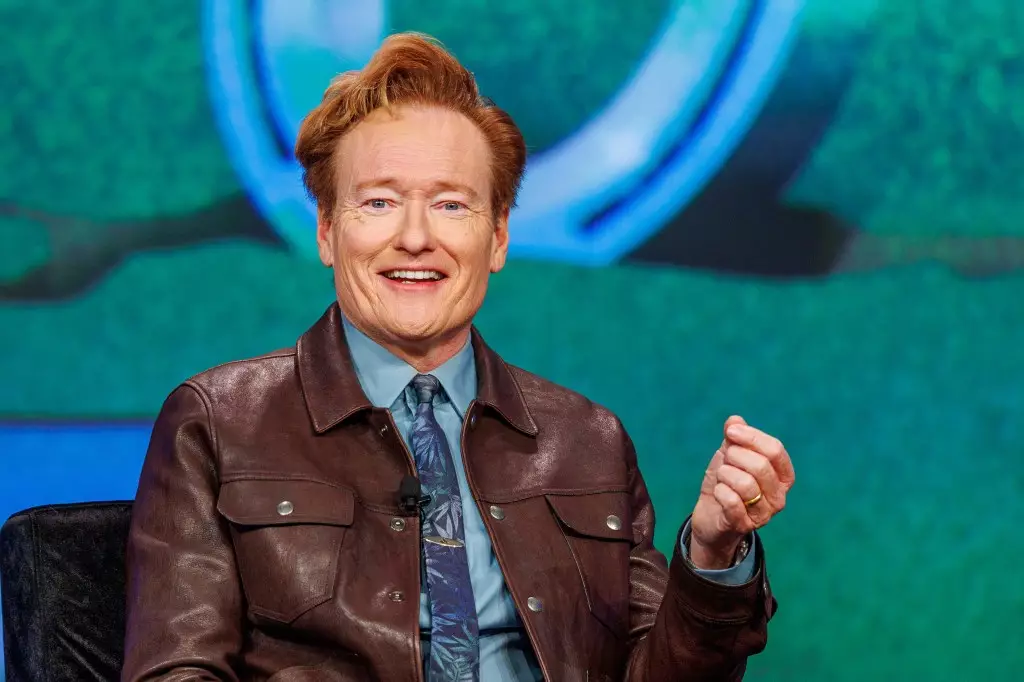With a surprising announcement, Conan O’Brien is joining the beloved Toy Story franchise as a new character, Smarty Pants. This decision by Disney and Pixar has stirred a pot of varied reactions, emphasizing both the excitement and anxiety that accompany the evolution of long-standing franchises. Much like our world today, where traditional roles and conventions are constantly being challenged, the integration of a pop culture icon like O’Brien suggests a deliberate shift in how storytelling is approached in animation.
Toy Story has, for decades, represented the pinnacle of animated storytelling—balancing humor, heartfelt emotion, and relatable characters. However, with cinema’s rapid transformation, the move to introduce new voices like O’Brien’s raises questions about maintaining the integrity and essence of what made Toy Story special. There’s a palpable risk that in the pursuit of relevant humor and contemporary dynamics, we may begin to dilute the foundational narratives that resonate so deeply with audiences.
Conan’s Unique Flair
O’Brien’s comedic persona—a mix of self-deprecating humor and razor-sharp wit—has won hearts across generations. However, stepping into a franchise with such an esteemed legacy comes with expectations. While it’s refreshing to have someone of his caliber, the question looms: can his voice truly fit within the established norms of Toy Story? After all, the film series has thrived from a careful balance between nostalgia and innovation. Will Smarty Pants become another colorful addition, or will his personality overshadow the heart and soul that fans have come to know and love?
It’s evident that Conan’s enthusiasm for the new character is genuine, as he quipped about preferring Smarty Pants over Woody or Buzz Lightyear. However, this brings to light a critical concern over how much creative autonomy O’Brien will actually have over his character. Often, what seems innovative on the surface runs the risk of being overwhelmingly tailored to fit a larger corporate narrative. Amid the dazzling prospects of new characters and technological integration, there exists a concern that we might overlook the emotional richness that elevated Toy Story.
The New Generation of Toy Story
Set for release in June 2026, the latest installment will tackle modern themes, introducing the iconic characters to a world dominated by electronics, reflecting current societal obsessions. The synergy of toys and technology may capture a new audience, but it also raises significant ethical questions. Why must beloved, timeless characters evolve to accommodate the fleeting whims of trendy technology? Is it necessary to pander to younger generations who might connect more with tablets than timeless stories of friendship and loyalty?
This change could fundamentally alter the character arcs that have been cultivated over the years. Writer-director Andrew Stanton, a force behind timeless creations like WALL-E and Finding Nemo, certainly brings a pedigree that inspires confidence. Yet, the imperative lies not just with the creator’s skills but also in how they approach the existing storytelling framework. Will they prioritize innovative technology over character depth?
Casting Choices and Industry Implications
New additions to the voice cast, including Ernie Hudson and Anna Faris, illustrate a broader trend in Hollywood—casting recognizable names to drive box office success, even at the potential cost of narrative integrity. While there’s no denying the star power these actors bring to the project, we must grapple with whether their star status can translate into authentic character portrayals. The nostalgia tied to the original cast—most notably Tom Hanks—creates a unique challenge: can newcomers truly capture the spirit of their predecessors, as O’Brien humorously suggested when his ambition to play Woody fell short?
The decision to bring O’Brien on board reflects a larger strategy to keep the franchise relevant and engaging in an era teeming with streaming platforms and a rapidly evolving entertainment landscape. Yet, it compels audiences—and perhaps even the creators—to ask difficult questions about balance. In seeking to modernize, can the heart of Toy Story endure without being sacrificed at the altar of trend?
In a landscape rife with reboots and sequels, O’Brien’s role may well be a microcosm of the broader struggles facing the industry. Do we embrace evolving narratives and characters, or do we cling to the timeless stories that have shaped generations? The outcome remains uncertain, hanging in the balance as anticipation builds for the next chapter of Toy Story.


Leave a Reply